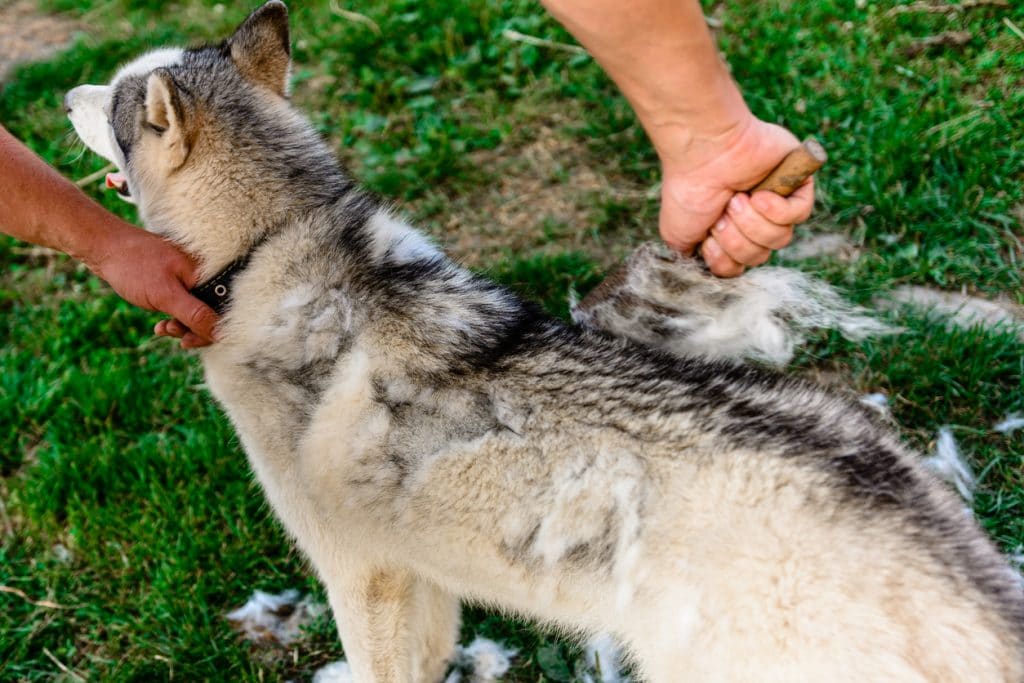- This post contains affiliate links. Read more here.
You’re waiting at the vet with your dog for a routine checkup and the fur is flying. Literally. Depending on your dog’s size and level of anxiety, by the time the veterinarian comes into the exam room, the floor—and your clothing—is covered with fur. What gives?
It turns out one of the first signs of nervousness for dogs, along with panting, is hair loss or stress shedding. You may also see stress shedding in other situations where your dog is uncomfortable, like during fireworks or thunderstorms, in new situations like a training class or when there are unfamiliar people or animals in your home.
Essentially, anywhere your dog is anxious and out of his element can cause a nervous shedding response.

iStock/Niko_Cingaryuk
What causes stress shedding in dogs?
Well, stress. Epinephrine (the scientific way of saying adrenaline) is one of the primary stress hormones in dogs. It’s unclear exactly how stress triggers dogs to release their fur, but even show dogs are known to “blow their coat” before a big event. As with humans, stress can be an acute, one-time event—like a trip to the vet—or an ongoing issue, such as a new pet in the household or a move to a new home.
While anxiety and nervousness often catch our attention more, some pet owners have reported that even a happy dog—excited to go for a car ride, for instance—can have a stress shedding response. But if the stress seems chronic, it’s worth talking to your vet.
What to do about stress shedding
Obviously, you can’t prevent hormones from flowing, but you can help to minimize stressful events. The goal is to reduce or eliminate chronic stress for our dogs as much as possible. A dog jacket or wrap for anxiety during thunder or fireworks can help dogs feel less frightened. Using natural remedies like over the counter aromatherapy and flower essences can further the calming. Your veterinarian is your best resource for tips on how to calm your stressed pet.
For stresses caused by a new situation in the dog’s home, be it visitors or a new pet, giving the dog his own safe zone to retreat can be important. A quiet bedroom with a baby gate (or crate) where he can feel secure is helpful, especially if the visitors include young children excited to see “doggie!”
In situations outside your home, calm reassurance and training exercises help him to learn all is well. For chronic or repetitive events, such as a new home or weekly dog classes, natural conditioning (that is, learning) will go a long way in reducing the stress response and could help excessive shedding decrease. Remember to go slowly, and allow him to feel confident before moving to the next step, whether at the dog park, at dog class, or introducing a new family member.
Reducing chronic stress can reduce excess shedding
As new situations and events become routine, your dog will learn that there is nothing to be worried about. Praise from you, and extra attention in the form of exercise like walks or play, or even a cuddle on the sofa, help him to know all is well. Training can help in many ways—not only learning new behaviors (manners or obedience commands), but your pet will gain overall confidence in learning new things.
Lastly, remember some breeds of dogs have a LOT of fur, and what may seem like excessive shedding could be completely normal for them. Check with your veterinarian if you think your dog is shedding too much fur.




